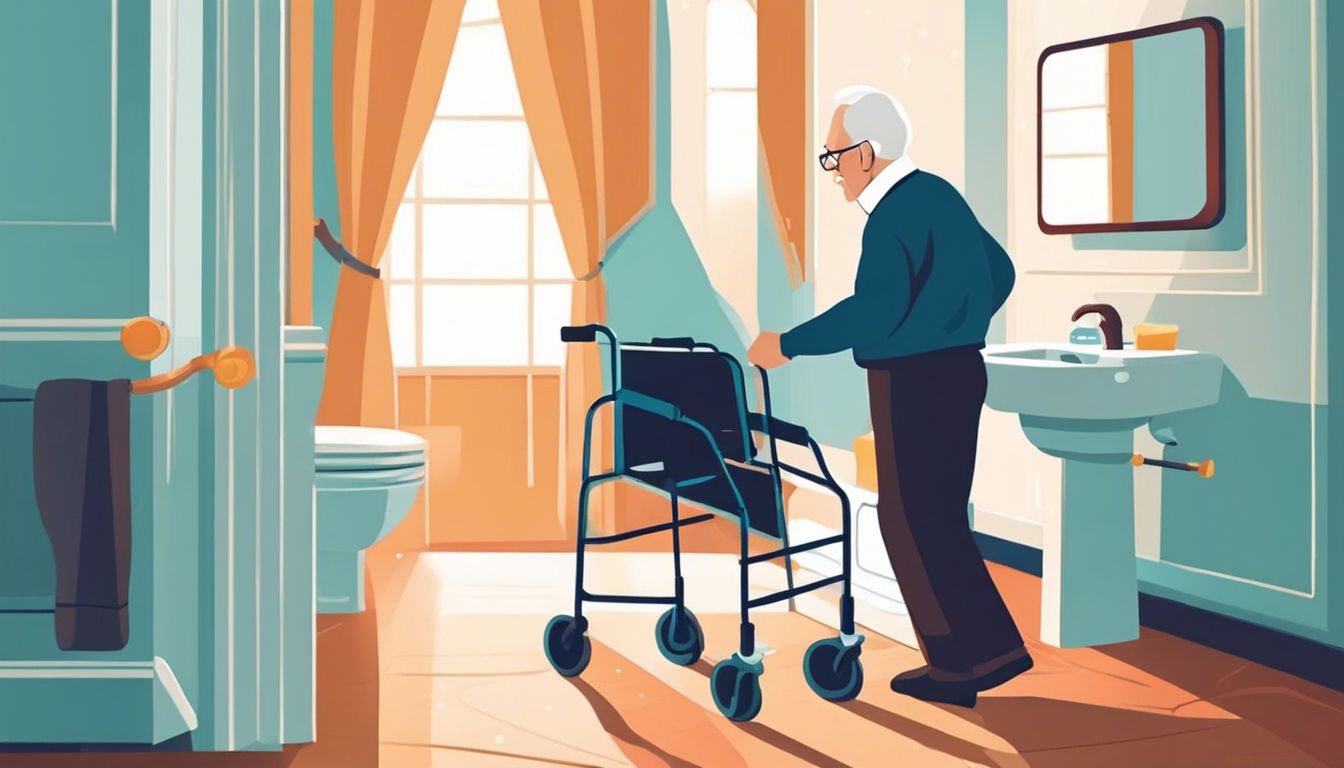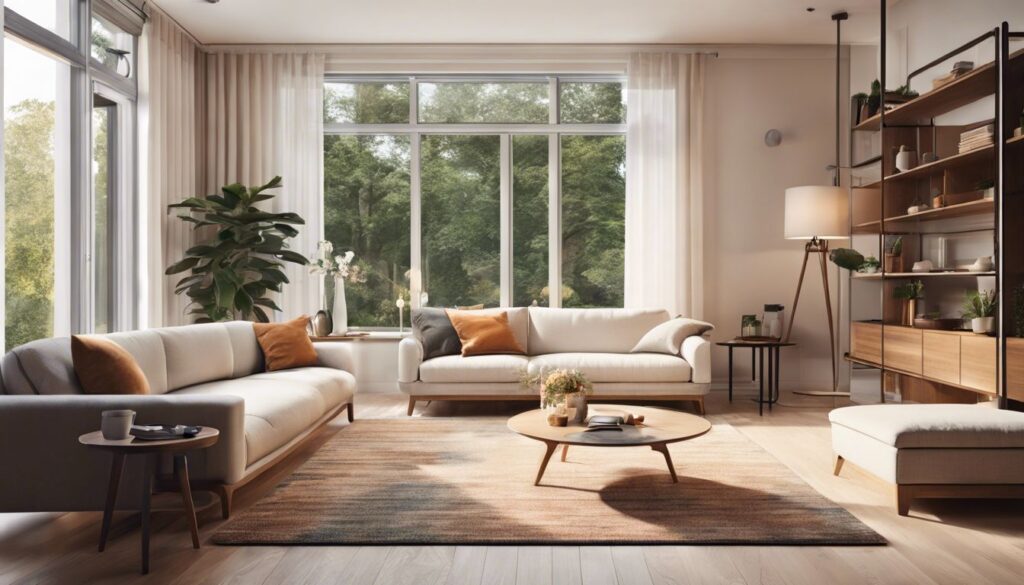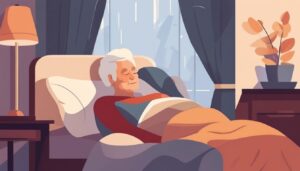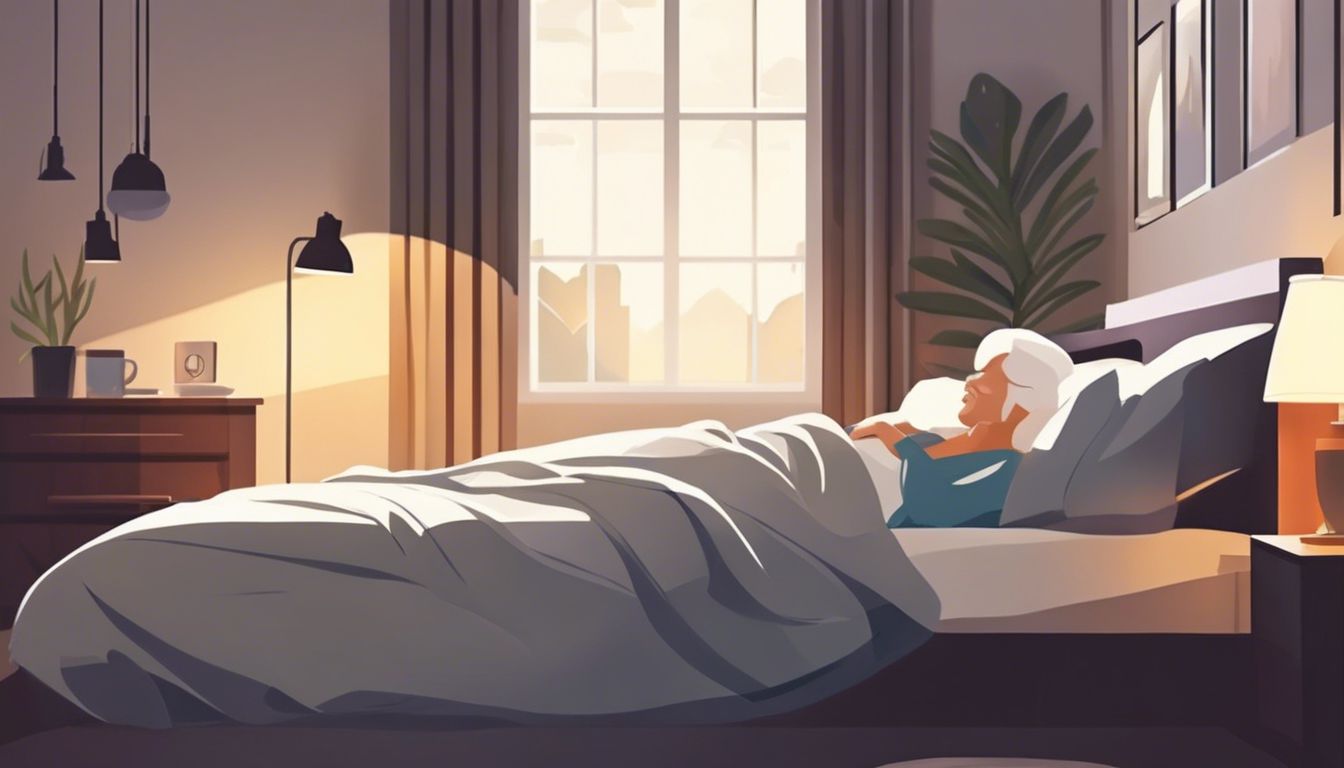Aging seniors often struggle with everyday tasks at home. 77% of Americans over 50 prefer to age in place rather than move elsewhere. Home modifications can make living spaces safer and more accessible for older adults.
This guide reveals key changes to boost comfort and independence.
📋✅
- 77% of Americans over 50 want to age in their own homes, and home modifications can make this safer and easier.
- Key areas for modifications include bathrooms, kitchens, and bedrooms, with changes like grab bars, non-slip floors, and better lighting to prevent falls.
- Important kitchen updates involve lowering counters to 30-34 inches, adding pull-out shelves, and using lever-style faucets for easier use.
- Bedroom changes should include handrails near beds, motion-sensor night lights, and wider doorways (at least 32 inches) for wheelchairs.
- Smart home tech, proper flooring, and strategic lighting placement can further boost safety and comfort for seniors aging at home.
Key Areas for Home Modifications

Key home modifications focus on improving safety and accessibility in critical living areas. Bathrooms, kitchens, and bedrooms often require the most changes to support seniors’ needs.
Bathroom Safety Enhancements
Bathroom safety enhancements protect seniors and improve their independence. These modifications reduce fall risks and increase comfort.
- Install grab bars near toilets and in showers for stability
- Add non-slip decals or mats to tub and shower floors
- Replace standard toilets with raised models for easier use
- Install a shower bench or seat for resting while bathing
- Replace tubs with walk-in showers or walk-in tubs
- Improve lighting with brighter bulbs and motion-sensor nightlights
- Widen doorways to accommodate wheelchairs or walkers
- Install handheld showerheads for flexibility while bathing
- Use lever-style faucet handles for easier operation
- Add a medical alert system for emergencies
Kitchen Accessibility Features
From bathroom safety, we move to the heart of the home: the kitchen. Kitchen accessibility features enhance independence and safety for seniors.
- Lower counters and sinks: Install countertops and sinks at 30-34 inches high for wheelchair users or those who need to sit while working.
- Pull-out shelves: Replace standard cabinet shelves with pull-out versions for easy access to items at the back.
- Lever-style faucets: Upgrade to lever handles on sinks for easier operation, especially for those with arthritis.
- Side-by-side refrigerator: Choose a model with freezer and fridge compartments side-by-side for better reach.
- Raised dishwasher: Elevate the dishwasher 6-10 inches off the ground to reduce bending and stooping.
- Microwave placement: Install the microwave at counter height or on a lowered shelf for safe, easy access.
- Adequate lighting: Add task lighting under cabinets and over work areas to improve visibility.
- Non-slip flooring: Install textured, non-slip flooring to prevent falls in the kitchen.
- D-shaped cabinet handles: Replace knobs with D-shaped handles for easier gripping and opening.
- Contrasting colors: Use contrasting colors for countertops, cabinets, and floors to help with depth perception.
Bedroom Adjustments for Better Access
Bedroom modifications enhance safety and accessibility for seniors. These adjustments promote independence and comfort.
- Install handrails near the bed for support when getting up or lying down
- Use adjustable beds to allow easy height changes and head/foot elevation
- Add motion-sensor night lights to improve visibility during nighttime bathroom trips
- Replace carpets with non-slip flooring to reduce fall risks
- Widen doorways to accommodate walkers or wheelchairs (32 inches minimum)
- Rearrange furniture to create clear pathways for mobility devices
- Mount grab bars near the bedside for extra stability
- Install a bed rail to prevent accidental falls during sleep
- Use lever-style door handles for easier grip and operation
- Place frequently used items within easy reach on nightstands or dressers
- Consider a hospital-style overbed table for convenient access to essentials
- Opt for cordless phones or medical alert systems for emergency communication
Essential Modifications to Increase Safety
Safety modifications can prevent accidents and boost confidence for seniors at home. Small changes like grab bars and better lighting make a big difference in daily life.
Installation of Grab Bars and Handrails
Grab bars and handrails are crucial safety features for seniors aging in place. These devices provide essential support and stability, reducing fall risks and enhancing independence.
- Strategic placement: Install grab bars in bathrooms near toilets, showers, and bathtubs. Add handrails along staircases and hallways for continuous support.
- Proper installation: Ensure secure mounting to wall studs or reinforced surfaces. Use professional installers to guarantee ADA compliance and weight-bearing capacity.
- Material selection: Choose rust-resistant, textured materials for better grip. Opt for contrasting colors to improve visibility for seniors with visual impairments.
- Height considerations: Position grab bars 33-36 inches from the floor. Install handrails at 34-38 inches for optimal support on stairs.
- Length and diameter: Use grab bars 18-24 inches long in bathrooms. Select handrails with a 1.25-1.5 inch diameter for easy gripping.
- Multiple options: Install vertical and horizontal grab bars in showers for varied support. Add fold-down grab bars near toilets for flexible use.
- Regular maintenance: Check for loose fittings and wear signs every 6 months. Replace damaged or worn components promptly to maintain safety.
Lighting improvements play a crucial role in enhancing visibility and preventing accidents for seniors.
Lighting Improvements for Better Visibility
Proper lighting drastically improves safety for seniors with reduced vision. Task lighting, such as bedside and floor lamps, enhances visibility in specific areas. Ambient lighting, like recessed lights, helps seniors navigate their homes more easily.
Smart lighting systems offer convenience and comfort for aging in place. These systems allow easy control of brightness and color temperature. Occupational therapists often recommend strategic placement of lights to reduce fall risks.
Next, we’ll explore flooring solutions that further prevent slips and accidents.
Flooring Solutions to Prevent Slips
Slip-resistant flooring is crucial for senior safety. Low-impact materials like rubber and cork reduce fall risks and provide firmer footing. Non-slip shower floors and textured surfaces in bathrooms minimize hazards.
Caregivers should consider installing these flooring options to create a safer environment for seniors aging in place. Smart home technology can complement these modifications, enhancing overall safety and accessibility.
Conclusion
Home modifications significantly enhance seniors’ quality of life. These changes boost independence and reduce fall risks. Smart technology and assistive devices offer added convenience and safety.
Government programs and tax benefits can help offset modification costs. Implementing these improvements allows older adults to age comfortably in their own homes.
For more information on enhancing senior living, discover effective pain management techniques for seniors with chronic conditions.
FAQs
1. What are key home modifications for senior safety?
Install stairlifts, grab bars, and raised toilets. Add better lighting in stairwells. Use non-slip flooring and widen doorways for wheelchair access.
2. How can universal design benefit aging-in-place?
Universal design creates spaces usable by all. It includes features like zero-step entries, lever doorknobs, and walk-in showers. These improve comfort and accessibility.
3. What technology aids senior independence?
Smart thermostats, voice assistants, and medical alert systems help. Keyless entry and smartphone apps for home control increase safety and ease of use.
4. Are home modifications covered by insurance?
Some Medicare Advantage plans cover modifications. Long-term care insurance may help. Check with healthcare professionals about coverage options.
5. How do home changes support mental well-being?
Improved accessibility reduces isolation. Better lighting aids vision and mood. Safe spaces encourage activity, promoting a healthier lifestyle and reducing loneliness.
6. Who can help plan home modifications?
Occupational therapists assess needs. Rebuilding Together offers assistance. Some franchises specialize in aging-in-place renovations. Consult for personalized solutions.









